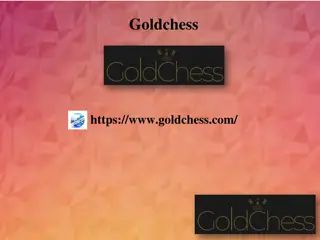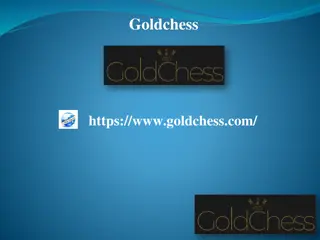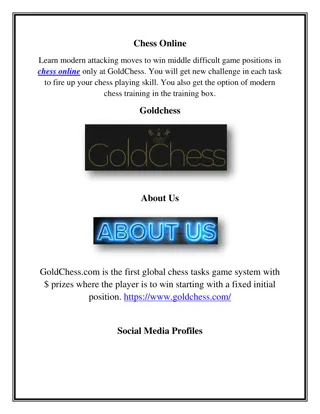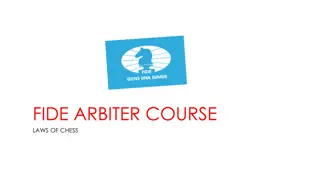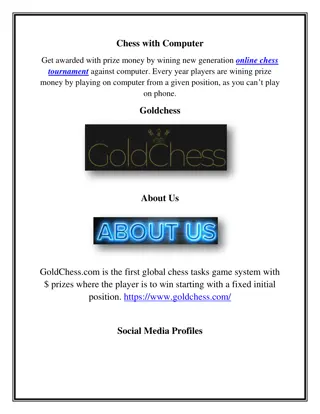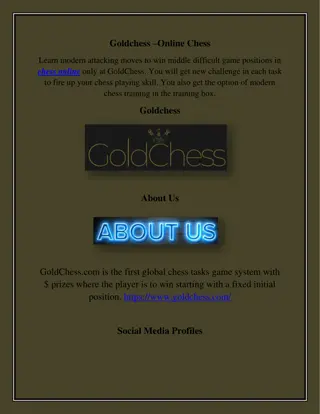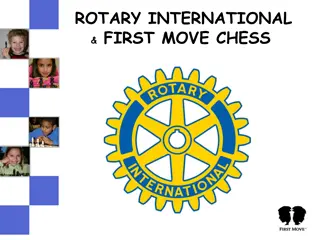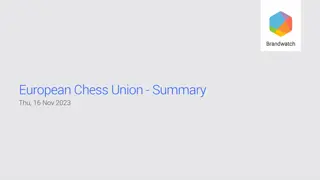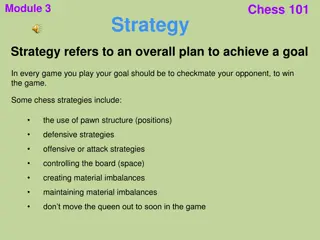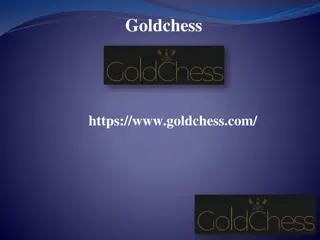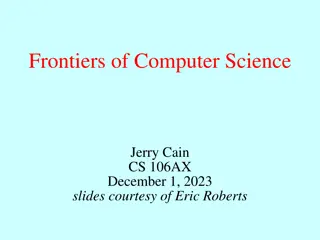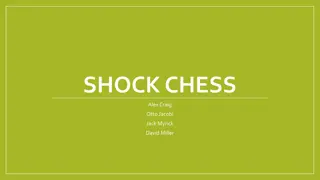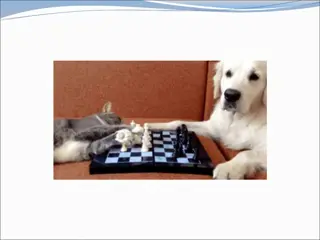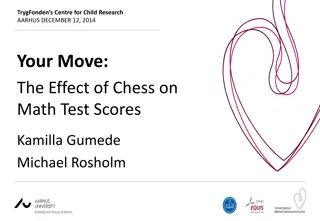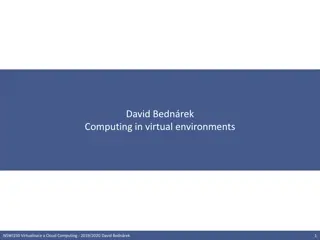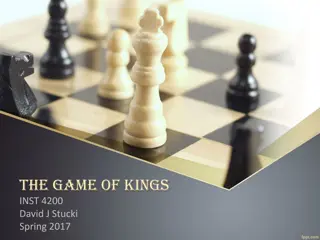Chess Strategies and Environments in AI
Dive into the world of chess AI with a focus on different strategies and environments such as playing with a clock, deterministic scenarios, and more. Explore the nuances of fully observable, episodic, and discrete environments in AI chess applications.
Download Presentation

Please find below an Image/Link to download the presentation.
The content on the website is provided AS IS for your information and personal use only. It may not be sold, licensed, or shared on other websites without obtaining consent from the author. Download presentation by click this link. If you encounter any issues during the download, it is possible that the publisher has removed the file from their server.
E N D
Presentation Transcript
Chess with a clock Yes Strategic Chess without Taxi driving a clock Yes Strategic No Yes Yes No Fully observable Deterministic Episodic Static Discrete Single agent No No No No Semi Yes No No No No
Chess with a clock Yes Strategic No Semi Yes No Chess without Taxi driving a clock Yes Strategic No Yes Yes No Fully observable Deterministic Episodic Static Discrete Single agent No No No No No No
Chess with a clock Yes Strategic No Semi Yes No Chess without Taxi driving a clock Yes Strategic No Yes Yes No Fully observable Deterministic Episodic Static Discrete Single agent No No No No No No
Chess with a clock Yes Strategic No Semi Yes No Chess without Taxi driving a clock Yes Strategic No Yes Yes No Fully observable Deterministic Episodic Static Discrete Single agent No No No No No No












